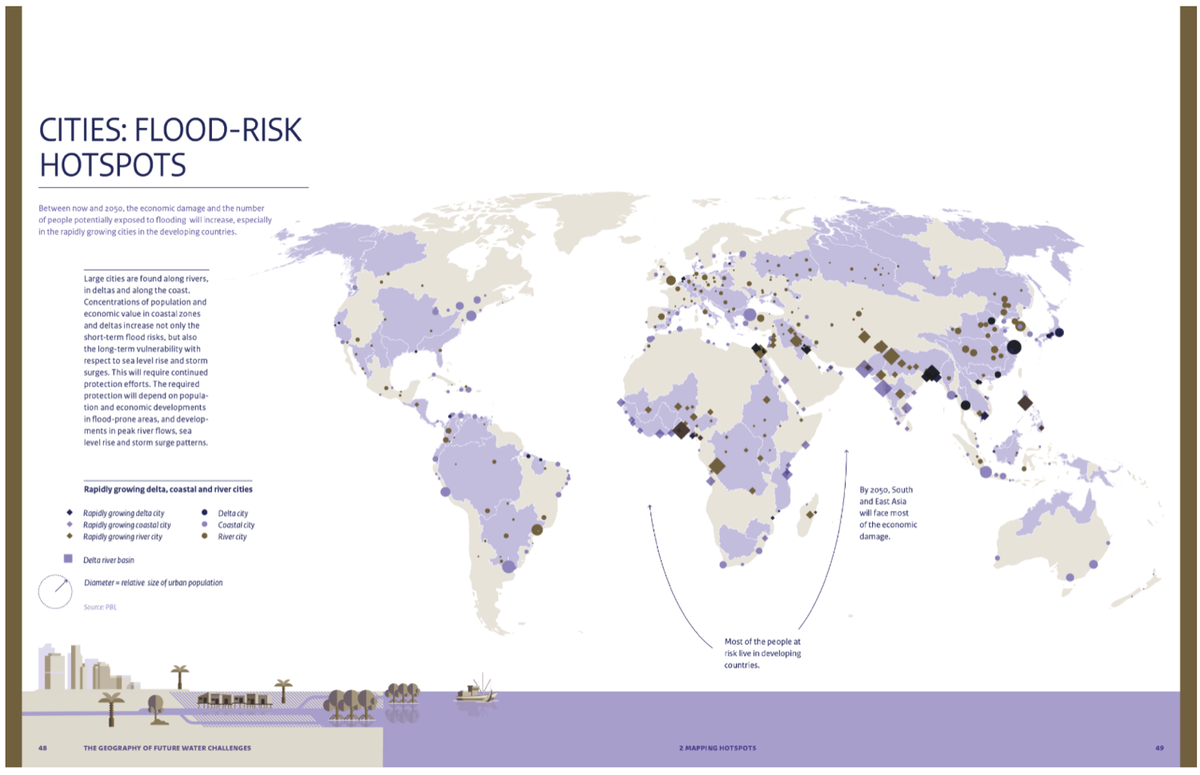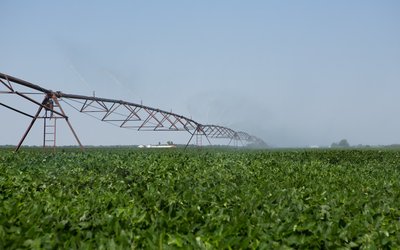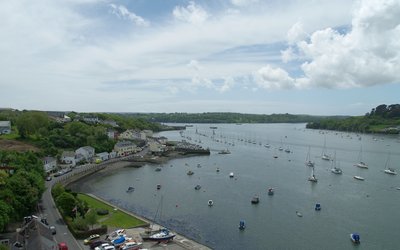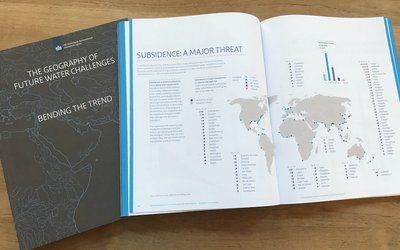
Map: Cities are a flood risk hotspot. By 2050, 70% of the world population is projected to live in an urban environment. Between now and 2050, the economic damage and the number of people potentially exposed to flooding will increase, especially in the rapidly growing cities in the developing countries.
Without improved water management or adaptation to climate change, the global sustainability goals cannot be achieved. This is illustrated by a large number of well-designed infographics in a new publication: The geography of future water challenges. Author is the Netherlands Environmental Assessment Agency. A large number of Dutch research institutes contributed to this.
The report highlights the urgent need for an integrated approach to limiting climate- and water-related risks globally. Using maps and infographics, The geography of future water challenges shows the water-related challenges of tomorrow, under a business-as-usual scenario.
Water is inextricably linked to sustainable developments and quality of life. The themes presented are food production, water quality and human health, flood risk, energy, ecological quality, and the interaction between water and migration and possible conflict risks. Water-related challenges are shown to be increasing, over the coming decades, due to a combination of population growth, economic development and climate change.
The report shows the urgent need for a coherent approach on a scale that is sufficiently large to cover the various problems and underlines the importance of collaboration between public parties to initiate solutions. The global landscapes in the search for integrated solutions will be the dryland regions, cities, transboundary river basins, coastal zones and deltas.








